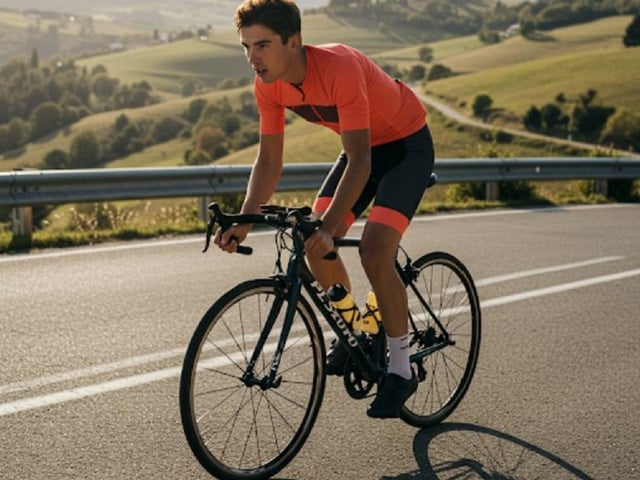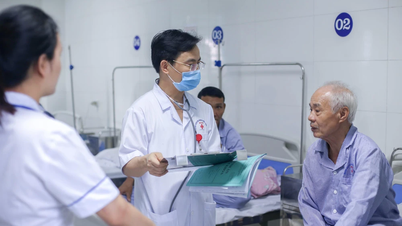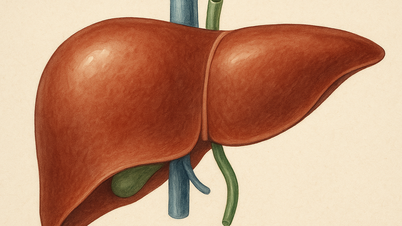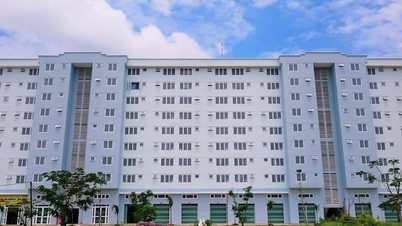Regular cycling will have positive changes in the following areas:
Lungs will be healthier
Cycling is an aerobic activity, meaning it primarily affects the cardiovascular and respiratory systems. When cycling regularly, your lungs will adapt to the exercise by increasing their capacity and efficiency, according to the health website Healthline (USA).
Because during exercise, the body will need more oxygen to supply the muscles. In response to this, the breathing rate will increase, the diaphragm will become stronger. Over time, the lungs improve their ability to store and exchange gases.

Cycling increases lung capacity and improves core muscles
PHOTO: AI
A study published in the European Respiratory Journal found that regular aerobic exercise such as cycling and jogging improves respiratory function and increases the body's ability to absorb oxygen. The lungs also work more efficiently to bring oxygen into the blood and expel carbon dioxide. As a result, exercisers are less likely to be out of breath during exercise.
In addition, healthy lungs also help reduce the risk of chronic diseases such as asthma, chronic obstructive pulmonary disease (COPD) and respiratory infections.
Cycling strengthens your legs
One of the most noticeable changes that cycling brings about every day is improved leg strength. This is because cycling mainly uses the quadriceps, hamstrings, calves, and hip flexors. These muscle groups constantly contract and stretch in a steady pedaling motion, which helps increase endurance and muscle growth over time.
A review article in the journal Sports Medicine confirms that regular cycling improves muscle strength, especially in the lower body, helping to maintain muscle mass even in older adults.
More flexible core muscles
Although cycling may seem like a lower-body workout, it actually engages your core muscles, including your abdominals, obliques, and lower back. These muscles are responsible for keeping your body stable while cycling, especially when running over rough terrain, climbing hills, or riding without hands.
Your core muscles play a vital role in maintaining your balance. Over time, the constant balancing movements you make while cycling help your core muscles become stronger and more durable.
Thicker glutes
The muscles in the buttocks are used a lot when cycling, especially when climbing hills or pedaling fast. This group of muscles helps to extend the hips and keep the pelvis stable during the pedaling process. Therefore, if you cycle every day, your buttocks will be stimulated to develop, become firmer, and even increase in size.
A study published in the Journal of Strength and Conditioning Research found that the gluteus maximus is highly active during high-intensity cycling, especially when carrying heavy loads or climbing hills, according to Healthline .
Source: https://thanhnien.vn/4-bo-phan-co-the-se-manh-hon-nho-dap-xe-185250420170753348.htm


![[Photo] General Secretary concludes visit to Azerbaijan, departs for visit to Russian Federation](https://vphoto.vietnam.vn/thumb/1200x675/vietnam/resource/IMAGE/2025/5/8/7a135ad280314b66917ad278ce0e26fa)
![[Photo] Prime Minister Pham Minh Chinh meets with the Policy Advisory Council on Private Economic Development](https://vphoto.vietnam.vn/thumb/1200x675/vietnam/resource/IMAGE/2025/5/8/387da60b85cc489ab2aed8442fc3b14a)
![[Photo] General Secretary To Lam begins official visit to Russia and attends the 80th Anniversary of Victory over Fascism](https://vphoto.vietnam.vn/thumb/1200x675/vietnam/resource/IMAGE/2025/5/8/5d2566d7f67d4a1e9b88bc677831ec9d)
![[Photo] National Assembly Chairman Tran Thanh Man chairs the meeting of the Subcommittee on Documents of the First National Assembly Party Congress](https://vphoto.vietnam.vn/thumb/1200x675/vietnam/resource/IMAGE/2025/5/8/72b19a73d94a4affab411fd8c87f4f8d)

![[Photo] President Luong Cuong presents the decision to appoint Deputy Head of the Office of the President](https://vphoto.vietnam.vn/thumb/1200x675/vietnam/resource/IMAGE/2025/5/8/501f8ee192f3476ab9f7579c57b423ad)
















































![[Photo] Prime Minister Pham Minh Chinh talks on the phone with Singaporean Prime Minister Lawrence Wong](https://vphoto.vietnam.vn/thumb/402x226/vietnam/resource/IMAGE/2025/5/8/e2eab082d9bc4fc4a360b28fa0ab94de)






























Comment (0)